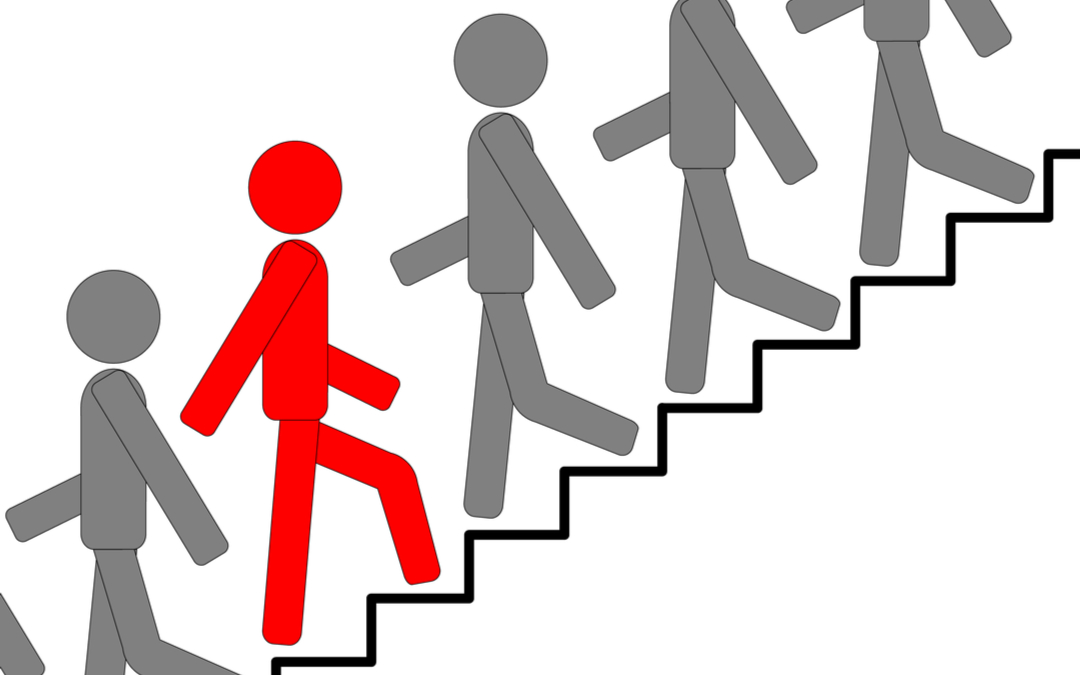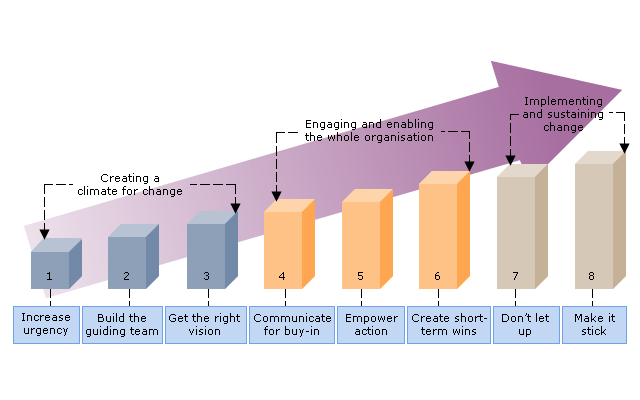Organizations experience change due to factors that may be internal or external. While an organization can control internal factors, external factors are outside the control of an organization. However, change is inevitable in an organization and therefore all Organizations must put proper measures in place to ensure that change is embraced. Organizational change is prompted by factors both internal and external to an organization. An example of an internal factor that may cause a change in an organization includes changes in management. This is especially the case when there is a need to replace the existing managers due to retirement transfer or promotion. However, each manager has a unique style of working in an organization and may, therefore, bring new ideas to an organization. This, therefore, results in the change of managerial relationships between the managers in an organization. This may also spark an attitude change in the personnel within Continue reading
Change Management
Reducing Resistance to Organizational Transformations
Every organization goes through a period of change and development at one time or another whether these be big organization mergers, such as companies being bought out such as when Coca-Cola bought Costa coffee for 3.9 billion pounds, or small changes such as an alteration to a software a company uses or the development and implementation of autonomous machinery that helps create an increase in productivity. It has long been argued that companies should apply a participative dialogical approach to manage these changes to help prevent resistance to these changes. However, there is the possibility that this will be resisted due to psychological reasons or self-interest. This essay aims to find out if psychological reasons or self-interest make it impossible to have a truly open and participative approach to organizational development? While looking at how leadership plays in to preparing and guiding through an organizational development. Despite probable positive results, Continue reading
Importance of People Capability Maturity Model (PCMM)
The People Capability Maturity Model (PCMM) is a well documented set of practices that enable growing original workforce competencies. It is more of a strategic management framework for building and growing original competencies. The PCMM practices help to retain, grow and nurture competent individuals. PCMM is an evolutionary framework that guides organizations in selecting high priority improvement actions based on the current maturity of their workforce practices. It is conceptual model based on state-of-the-art workforce practices. It focuses on continuously improving the management and development of the human assets of an organization. The PCMM initiative enables an organization to gain insight into its capability for managing and developing its workforce. Organizations need to identify the strengths and weaknesses of their current human resource management practices in order to understand what steps should be taken to improve them. The organization can then relate its strengths and weaknesses of its practices Continue reading
Introduction to People Capability Maturity Model (PCMM)
The People Capability Maturity Model framework was developed by Carnegie Mellon University, Software Engineering Institute to define the organizational maturity of people processes and practices. It helps the businesses to manage knowledge workers across global borders, as well as between graying and millennial generations. It is the framework that addresses the needs of employees, their competencies and the processes that need to be in place to ensure an organization is continuously improving and able to meet business needs effectively and efficiently and ranks on a scale 1 to 5, with 5 being the highest achievable maturity level. The People Capability Maturity Model (PCMM) is a well documented set of practices that enable growing original workforce competencies. It is more of a strategic management framework for building and growing original competencies. The PCMM practices help to retain, grow and nurture competent individuals. PCMM is an evolutionary framework that guides organizations in Continue reading
Kotter’s 8-Step Change Model
Change is the word that best described of the modern societies and culture. Change occurred in almost every aspects of life. Change presses us out from our comfort zone. People changed in their life to avoid stagnation and to improve their quality of life and become a better person. This is also true in business where the rapid change in technologies, the way of doing things, advances in information technologies, internal and external pressures, e-business and globalization creates a competitive environment in most organization in order to survive and to be relevant. How business react, operate and adapt to any changes determine the survivability of the company. In organization, change is necessary but often proves to be challenging. To guide a change (managing a change process) may be the greatest test for the leader of the organization especially when there is resistance. Therefore to lead a change is essential but Continue reading
Importance of Innovation and Change within an Organization
In today’s constantly changing world, innovation and change play an extremely important role within any organization. New technologies like faster software and hardware and improved manufacturing systems are increasing production and changing the way we do business across the globe. Newly advancing markets are becoming more and more capitalistic, opening the door for corporations to come and do business. There are multiple elements when dealing with innovation and change within an organization. The first element is how an organization can change successfully which consists of the steps that are needed and the process that makes change happen. The next element is technological change, which is how organizations adapt and implement new technology. From new technology, organizations come up with our next element, new products and services. As these organizations become larger and larger there is the need for strategy and structure change as well as cultural changes. These two elements Continue reading



